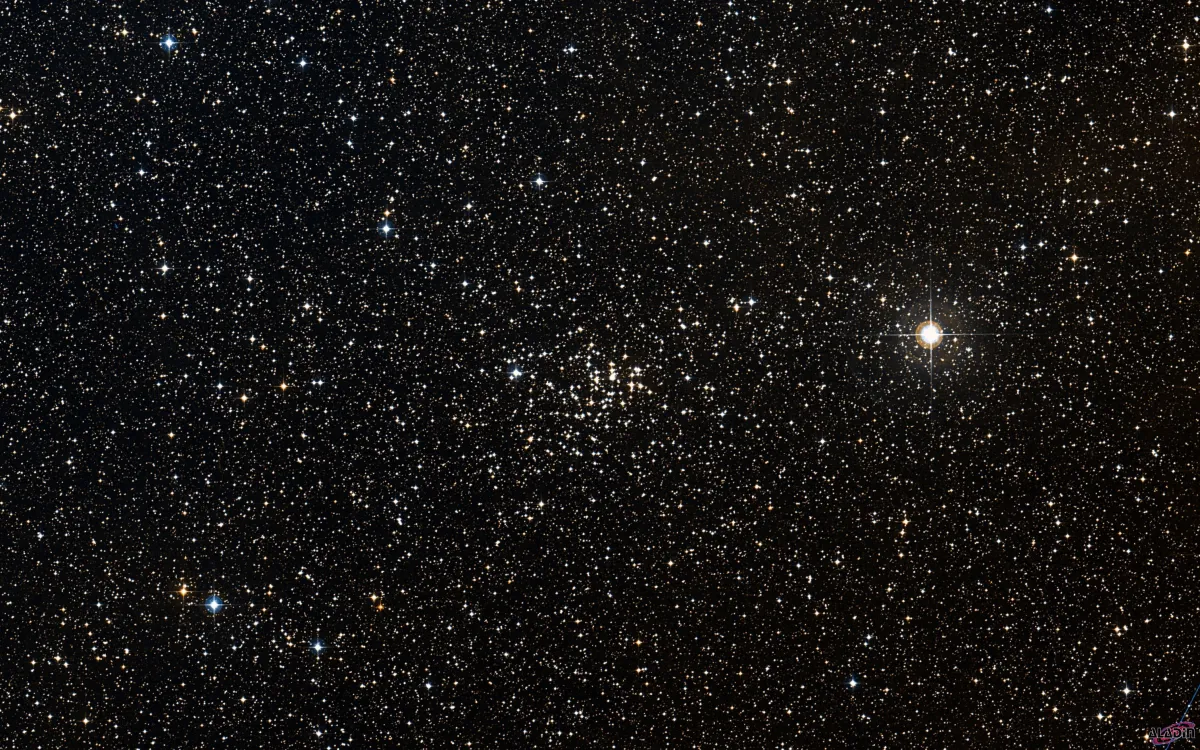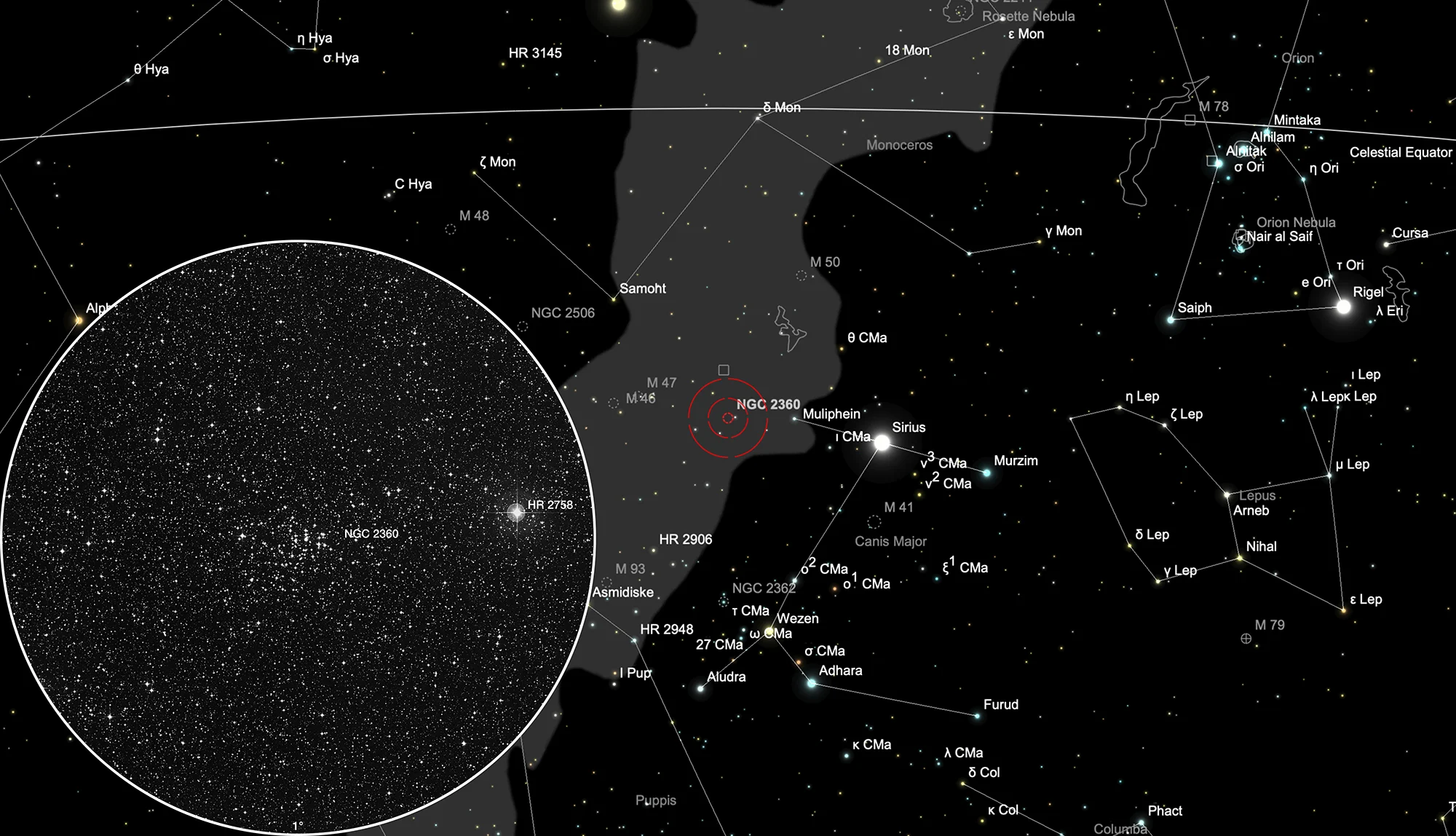Caroline's Cluster (NGC 2360)

History
Caroline Herschel discovered this open cluster on 26 February 1783 with her small refractor. This was her first deep-sky discovery, although the cluster was listed as number two in her discovery log. M 93 was the first. Her brother William immediately verified it with his 6.2-inch reflector. About eight months later William started to sweep the sky using his 18.7-inch reflecting telescope, where Caroline almost exclusively assisted his observations. [364] On 4 February 1784 he classified the cluster as seventh class (pretty much compressed clusters of large or small stars) with the designation VII 12. He remarked: «A beautiful cluster of pretty compressed stars near 1/2 degree diameter. C. H.» [463] Dreyer later listed this cluster as NGC 2360 in his «New General Catalogue» [313]
Physical Properties
Based on Gaia DR2 proper motion data, there were 332 cluster members identified. The logarithmic age was determined to 8.95±0.05 (891 million years) and the distance to 982±132 parsec. [240]
| Designation | NGC 2360 |
| Type | OCL (II2m) |
| Right Ascension (J2000.0) | 07h 17m 43.1s |
| Declination (J2000.0) | -15° 38' 29" |
| Diameter | 14 arcmin |
| Visual magnitude | 7.2 mag |
| Metric Distance | 1.887 kpc |
| Dreyer Description | Cl, vL, Ri, pC, st 9…12 |
| Identification, Remarks | WH VII 12; h 440=3076; GC 1512; OCL 589 |
Finder Chart
The open cluster NGC 2360 is located in the constellation Canis Maior. The best time for observation is in the months from September to June.
